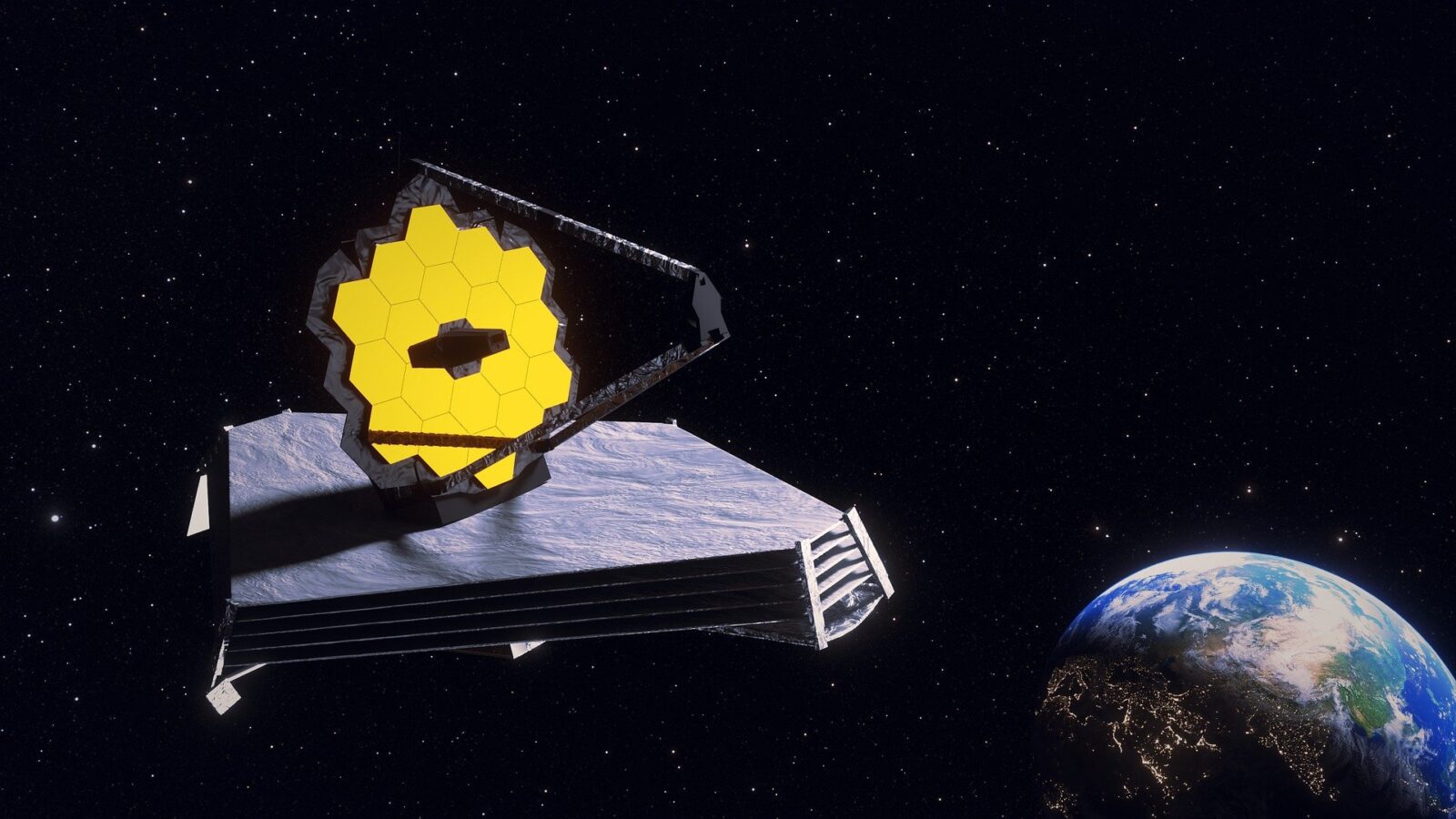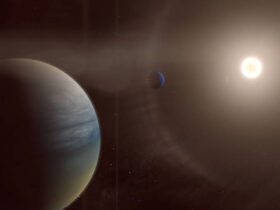Jupiter’s auroras and other features are being revealed more clearly than ever before thanks to the newest and most advanced space telescope in the world. On Monday, researchers from various institutions shared photographs of the largest planet in our solar system.
The photographs were taken in July by the James Webb Space Telescope, which captured images of Jupiter’s northern and southern lights, as well as its whirling polar haze, that had never been seen before. The Great Red Spot, a storm on Jupiter that is so large that it might engulf Earth, stands out prominently among countless other storms of varying sizes.
One of the wide-field images is particularly captivating since it reveals the barely discernible rings that are located around the planet, in addition to two minuscule moons, set against a brilliant background of galaxies.
According to the U.S.-French study team, the infrared photos were digitally colored in blue, white, green, yellow, and orange so that the features would be more noticeable.
The successor to the Hubble Space Telescope, which cost $10 billion and was developed by NASA and the European Space Agency, was successfully launched at the end of the previous year and has been detecting infrared light in the universe since the summer. With the help of the James Webb Space Telescope, researchers are hoping to get a glimpse of the universe as it was 13.7 billion years ago, when the first stars and galaxies were just beginning to form.
1. Make way for the king of the solar system! New Webb images of Jupiter highlight the planet’s features, including its turbulent Great Red Spot (shown in white here), in amazing detail. These images were processed by citizen scientist Judy Schmidt:
1. Make way for the king of the solar system!
New Webb images of Jupiter highlight the planet's features, including its turbulent Great Red Spot (shown in white here), in amazing detail. These images were processed by citizen scientist Judy Schmidt: https://t.co/gwxZOitCE3 pic.twitter.com/saz0u61kJG
— NASA Webb Telescope (@NASAWebb) August 22, 2022














Leave a Reply